Abstract
The changes in extracellular fluid volume (ECV) in two groups of surgical patients, one receiving Ringer's lactate solution intraoperatively and the other receiving only dextrose and water, were assessed. A deficit in the ECV, as measured by radioactive sulfate, of 1.9 +/- 0.8 l (p less than 0.003) compared to the preoperative volume was found in the dextrose group. This was accompanied by a decrease in the mean creatinine clearance (-13% p less than 0.01), the mean urinary sodium excretion (-57% p less than 0.05), and the mean rate of clearance of the sulfate tracer (-18% p less than 0.01). The use of intraoperative Ringer's lactate (1660 cc +/- 96 cc) resulted in no change in the ECV, an increase in the mean creatinine clearance (+10% p less than 0.05), and no change in sodium excretion or tracer clearance. As a result of these findings, it appears that postoperative sodium retention is a physiologic response to a decreased ECV, which can be prevented by the administration of Ringer's lactate.
Full text
PDF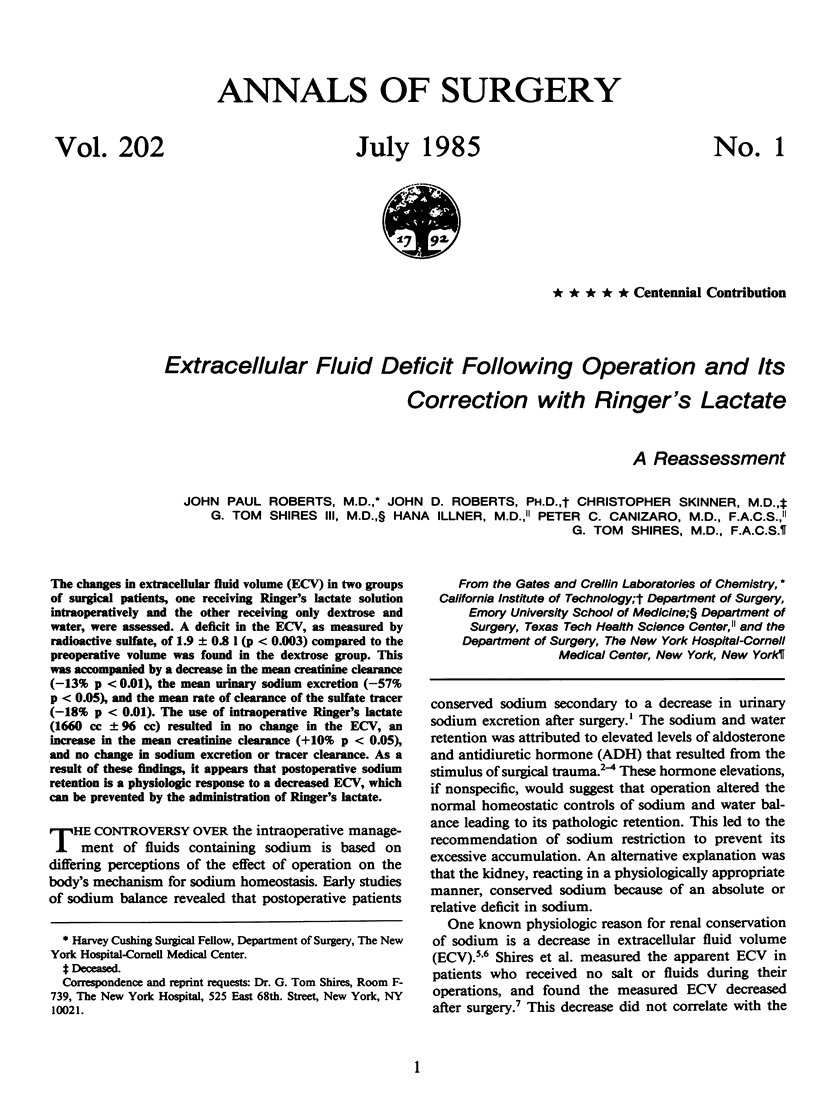
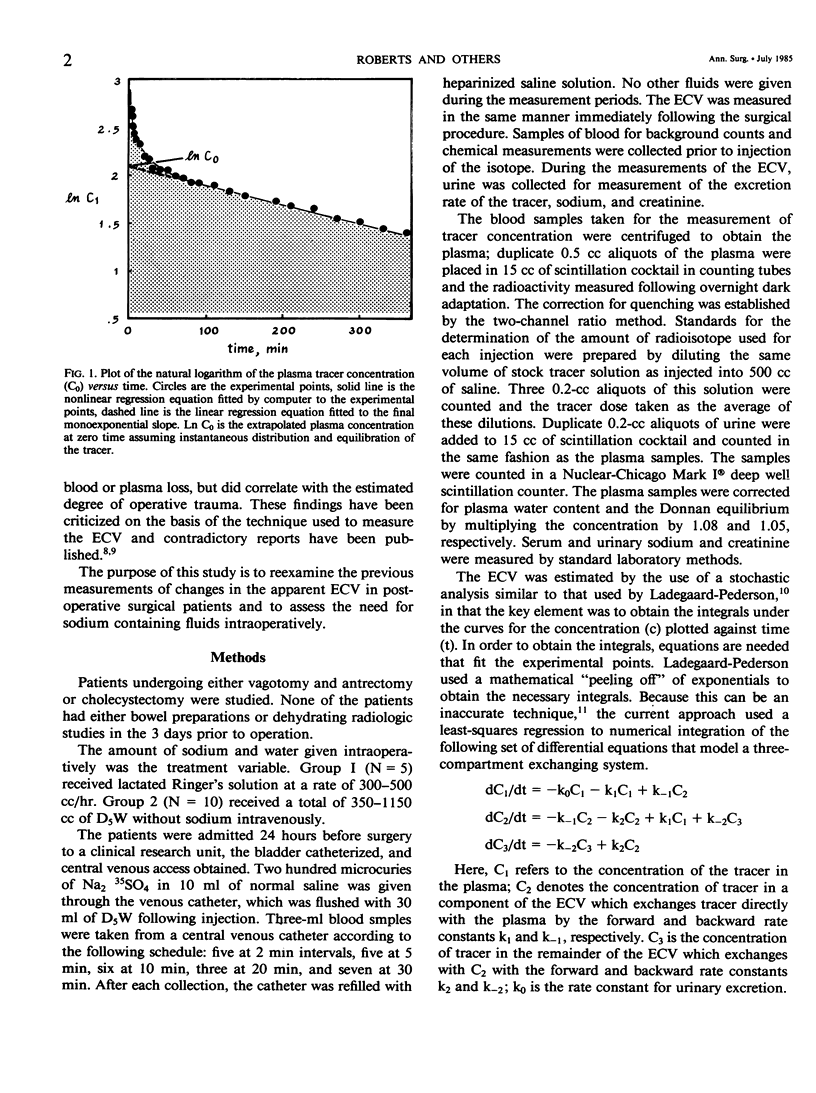
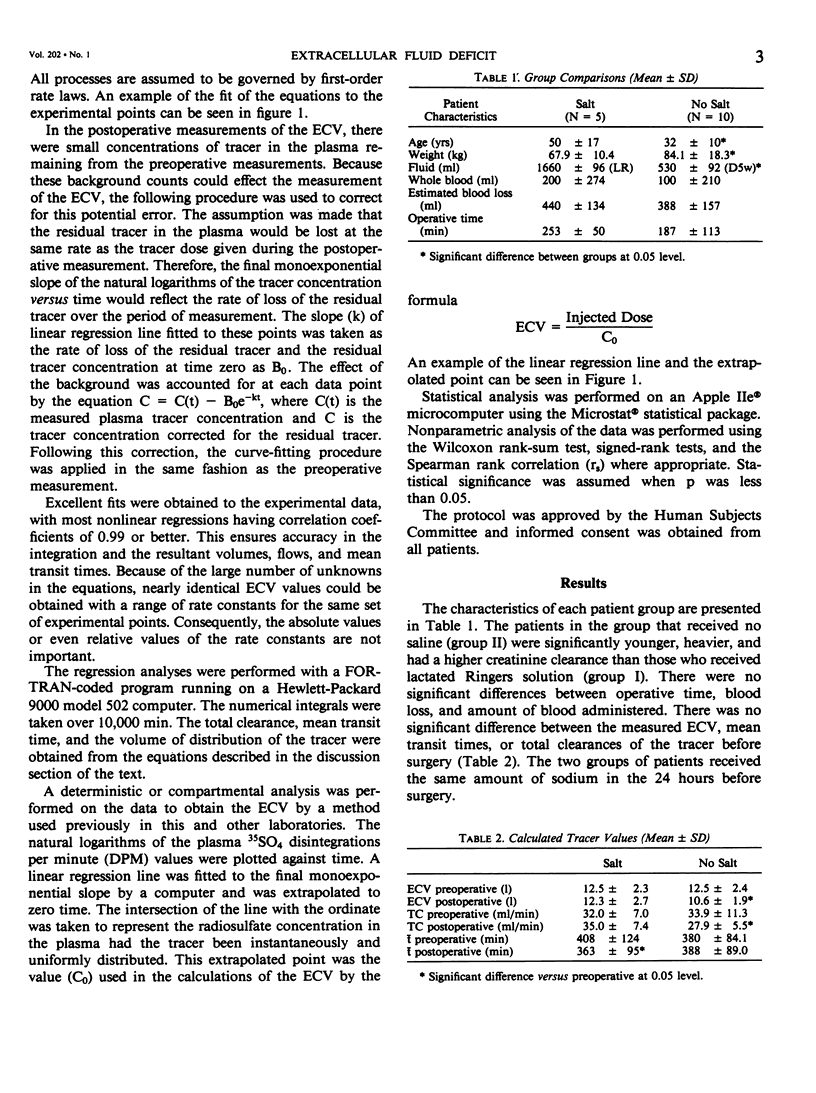
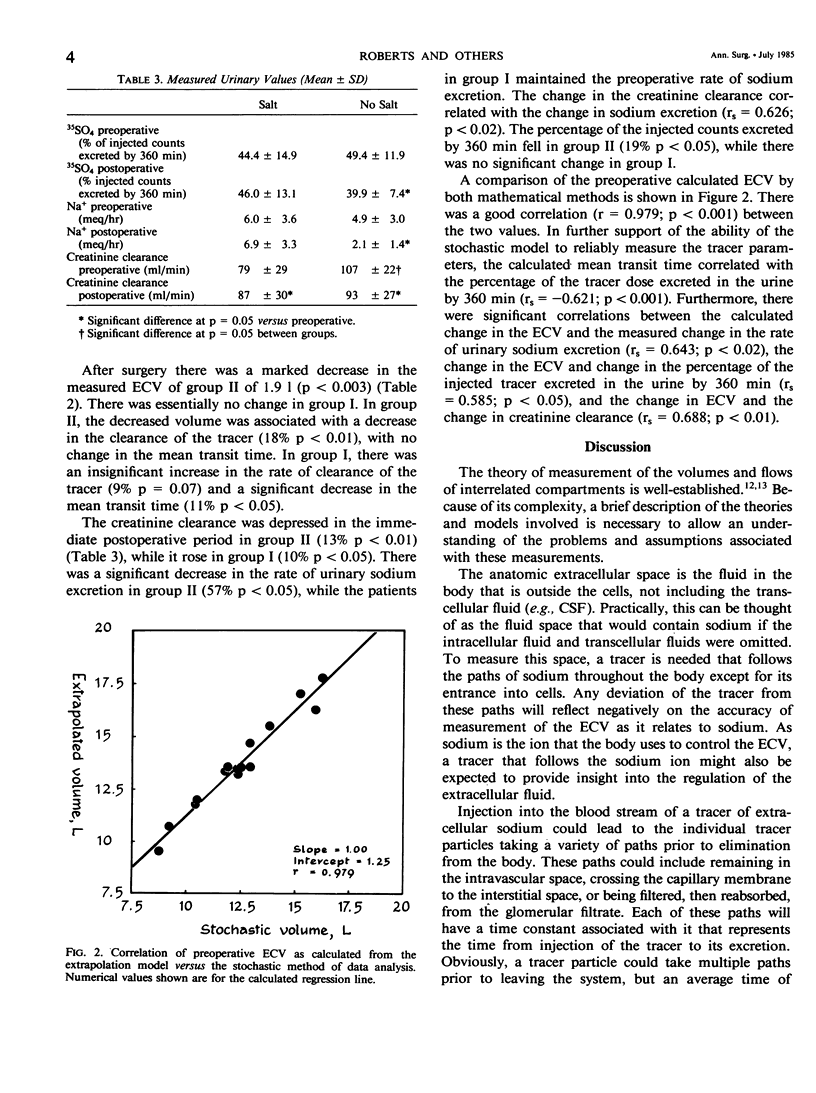
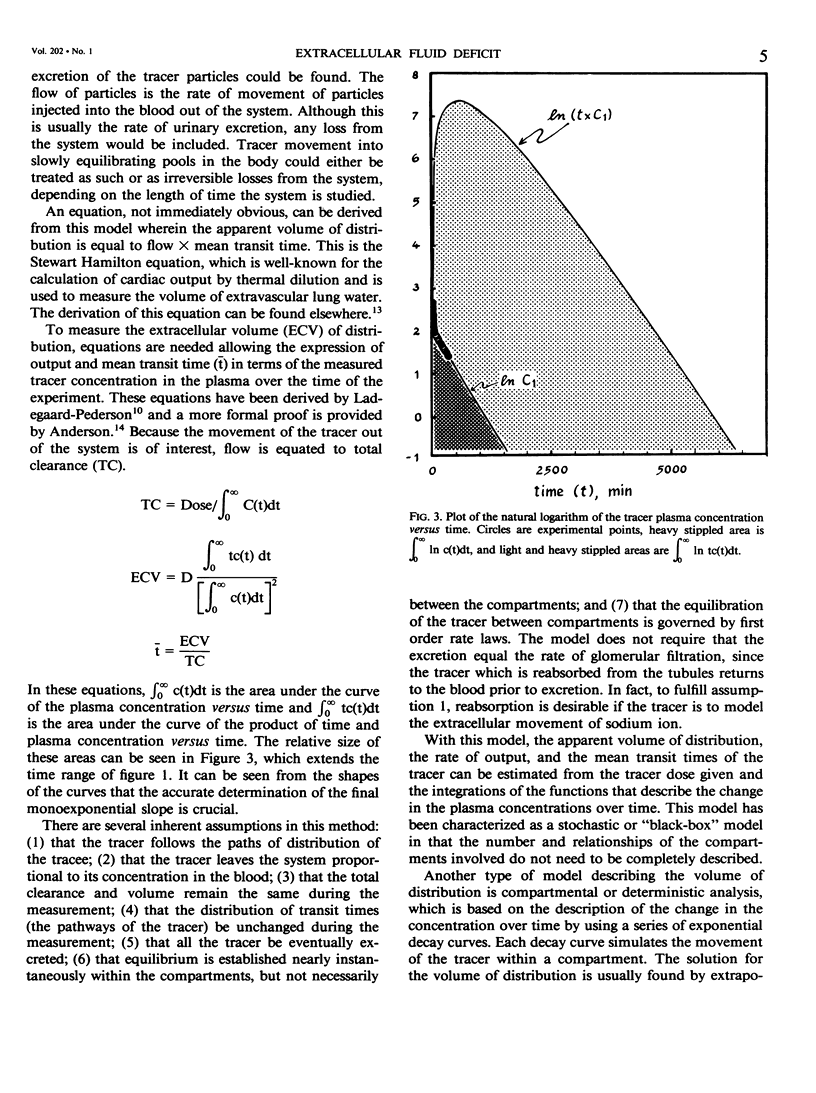
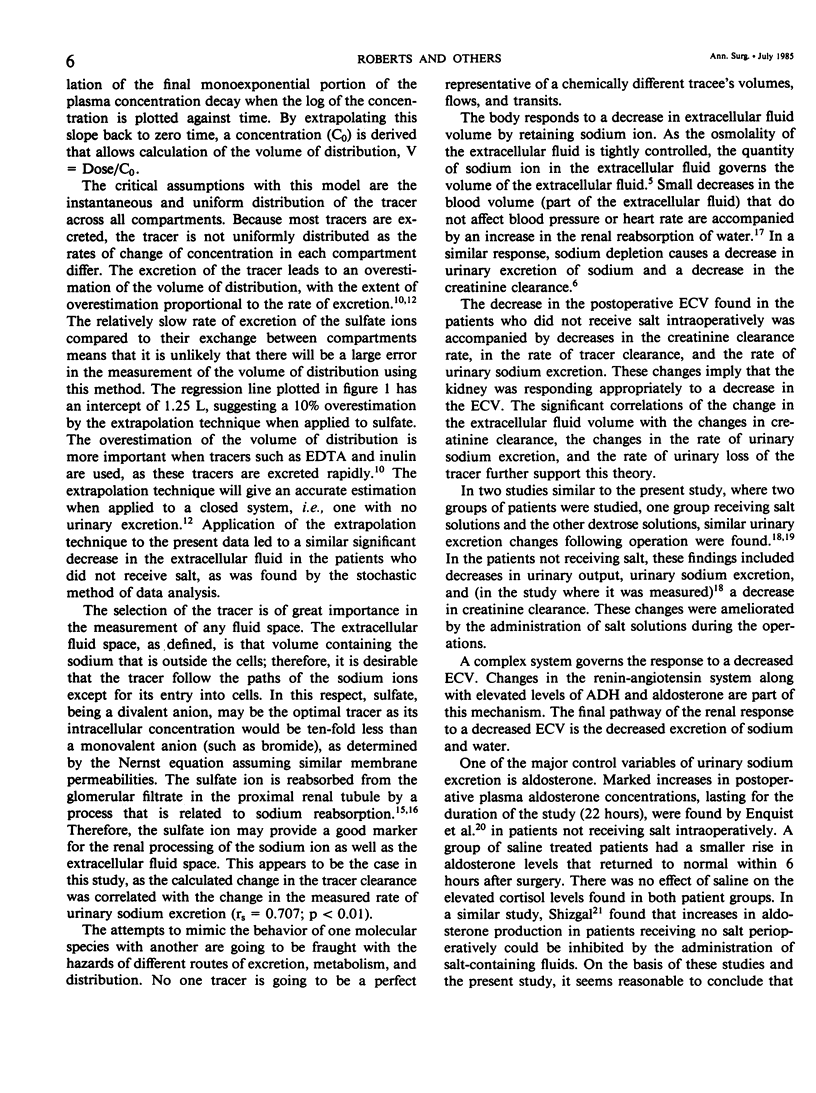
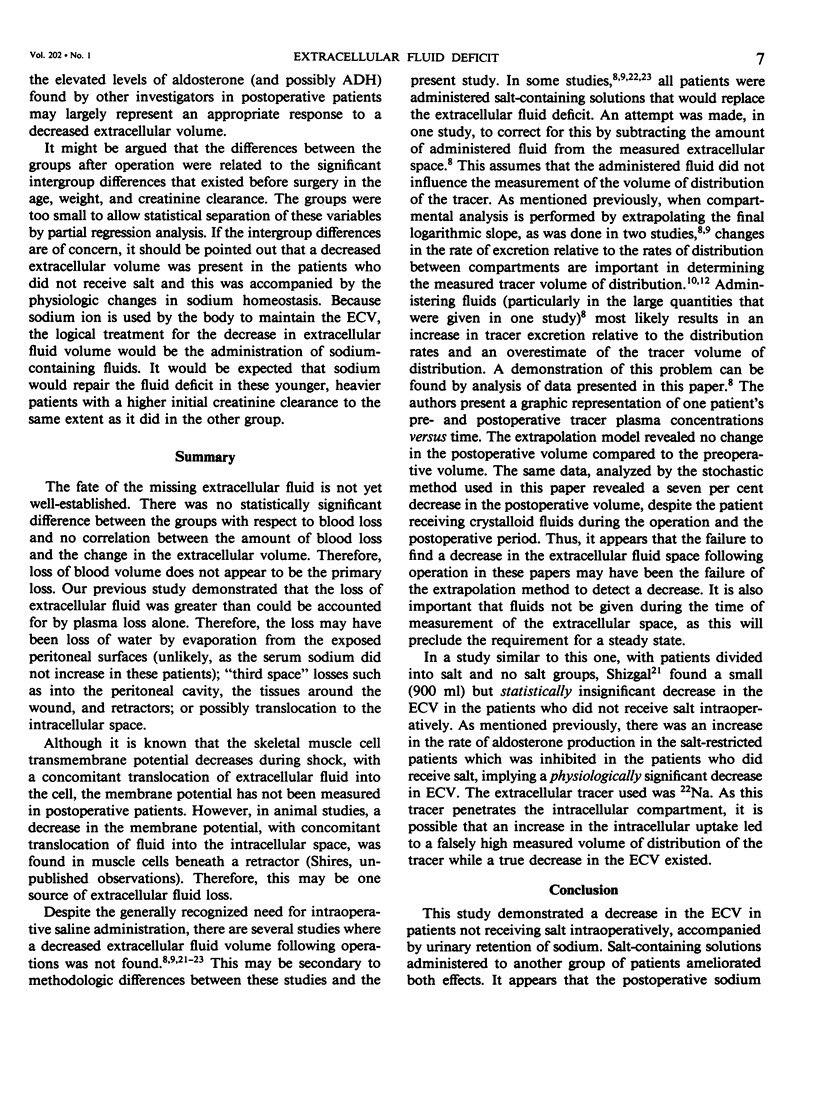
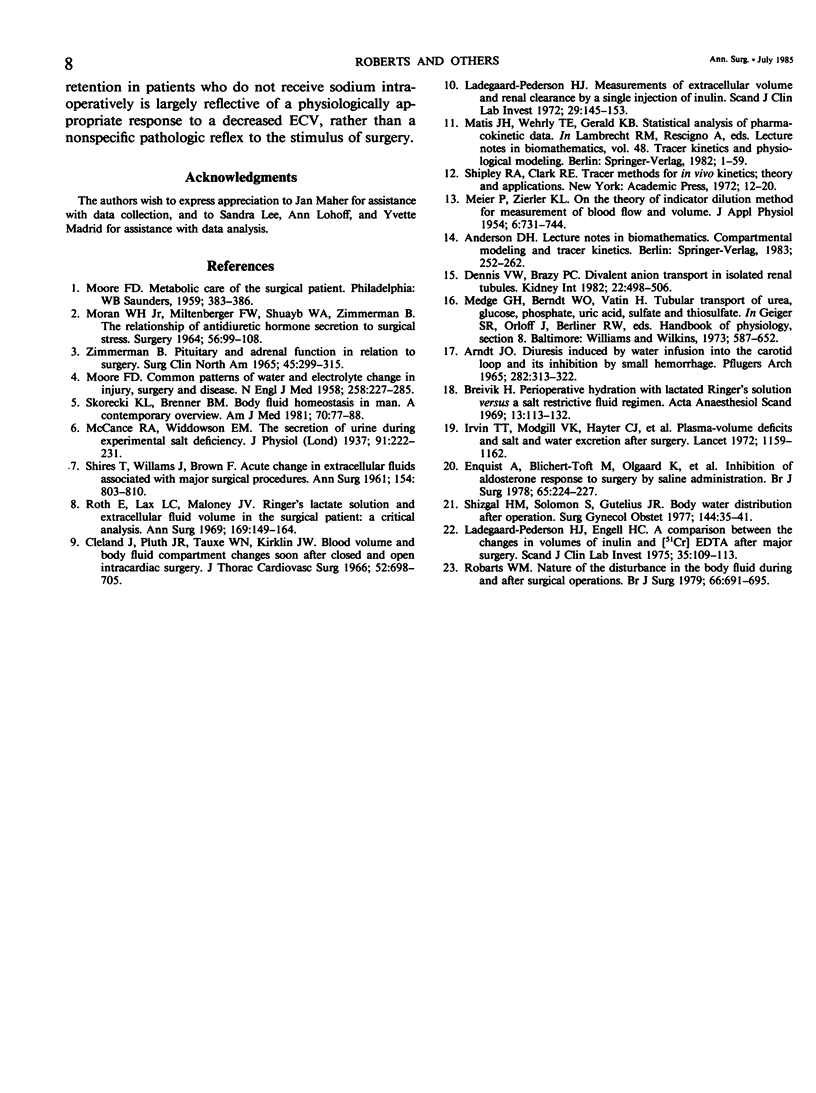
Selected References
These references are in PubMed. This may not be the complete list of references from this article.
- ARNDT J. O. DIURESIS INDUCED BY WATER INFUSION INTO THE CAROTID LOOP AND ITS INHIBITION BY SMALL HEMORRHAGE. THE COMPETITION OF VOLUME- AND OSMOCONTROL. Pflugers Arch Gesamte Physiol Menschen Tiere. 1965 Jan 11;282:313–322. doi: 10.1007/BF00412506. [DOI] [PubMed] [Google Scholar]
- Breivik H. Peroperative hydration with lactated Ringer's solution versus a saltfree restrictive fluid regimen. Effects on postoperative fluid and electrolyte metabolism and renal function in patients undergoing partial gastrectomy. Acta Anaesthesiol Scand. 1969;13(2):113–132. doi: 10.1111/j.1399-6576.1969.tb00961.x. [DOI] [PubMed] [Google Scholar]
- Cleland J., Pluth J. R., Tauxe W. N., Kirklin J. W. Blood volume and body fluid compartment changes soon after closed and open intracardiac surgery. J Thorac Cardiovasc Surg. 1966 Nov;52(5):698–705. [PubMed] [Google Scholar]
- Dennis V. W., Brazy P. C. Divalent anion transport in isolated renal tubules. Kidney Int. 1982 Nov;22(5):498–506. doi: 10.1038/ki.1982.203. [DOI] [PubMed] [Google Scholar]
- Engquist A., Blichert-Toft M., Olgaard K., Brandt M. R., Kehlet H. Inhibition of aldosterone response to surgery by saline administration. Br J Surg. 1978 Apr;65(4):224–227. doi: 10.1002/bjs.1800650403. [DOI] [PubMed] [Google Scholar]
- Irvin T. T., Modgill V. K., Hayter C. J., McDowall D. G., Goligher J. C. Plasma-volume deficits and salt and water excretion after surgery. Lancet. 1972 Dec 2;2(7788):1159–1161. doi: 10.1016/s0140-6736(72)92590-1. [DOI] [PubMed] [Google Scholar]
- Ladegaard-Pedersen H. J., Engell H. C. A comparison between the changes in the distribution volumes of inulin and [51Cr]EDTA after major surgery. Scand J Clin Lab Invest. 1975 Mar;35(2):109–113. doi: 10.1080/00365517509087213. [DOI] [PubMed] [Google Scholar]
- Ladegaard-Pedersen H. J. Measurement of extracellular volume and renal clearance by a single injection of inulin. Scand J Clin Lab Invest. 1972 Apr;29(2):145–153. doi: 10.3109/00365517209081067. [DOI] [PubMed] [Google Scholar]
- MEIER P., ZIERLER K. L. On the theory of the indicator-dilution method for measurement of blood flow and volume. J Appl Physiol. 1954 Jun;6(12):731–744. doi: 10.1152/jappl.1954.6.12.731. [DOI] [PubMed] [Google Scholar]
- MORAN W. H., Jr, MILTENBERGER F. W., SHUAYB W. A., ZIMMERMANN B. THE RELATIONSHIP OF ANTIDIURETIC HORMONE SECRETION TO SURGICAL STRESS. Surgery. 1964 Jul;56:99–108. [PubMed] [Google Scholar]
- McCance R. A., Widdowson E. M. The secretion of urine in man during experimental salt deficiency. J Physiol. 1937 Nov 26;91(2):222–231. doi: 10.1113/jphysiol.1937.sp003554. [DOI] [PMC free article] [PubMed] [Google Scholar]
- Robarts W. M. Nature of the disturbance in the body fluid compartments during and after surgical operations. Br J Surg. 1979 Oct;66(10):691–695. doi: 10.1002/bjs.1800661006. [DOI] [PubMed] [Google Scholar]
- Roth E., Lax L. C., Maloney J. V., Jr Ringer's lactate solution and extracellular fluid volume in the surgical patient: a critical analysis. Ann Surg. 1969 Feb;169(2):149–164. doi: 10.1097/00000658-196902000-00001. [DOI] [PMC free article] [PubMed] [Google Scholar]
- SHIRES T., WILLIAMS J., BROWN F. Acute change in extracellular fluids associated with major surgical procedures. Ann Surg. 1961 Nov;154:803–810. doi: 10.1097/00000658-196111000-00005. [DOI] [PMC free article] [PubMed] [Google Scholar]
- Shizgal H. M., Solomon S., Gutelius J. R. Body water distribution after operation. Surg Gynecol Obstet. 1977 Jan;144(1):35–41. [PubMed] [Google Scholar]
- Skorecki K. L., Brenner B. M. Body fluid homeostasis in man. A contemporary overview. Am J Med. 1981 Jan;70(1):77–88. doi: 10.1016/0002-9343(81)90414-9. [DOI] [PubMed] [Google Scholar]
- ZIMMERMANN B. PITUITARY AND ADRENAL FUNCTION IN RELATION TO SURGERY. Surg Clin North Am. 1965 Apr;45:299–315. doi: 10.1016/s0039-6109(16)37533-8. [DOI] [PubMed] [Google Scholar]


